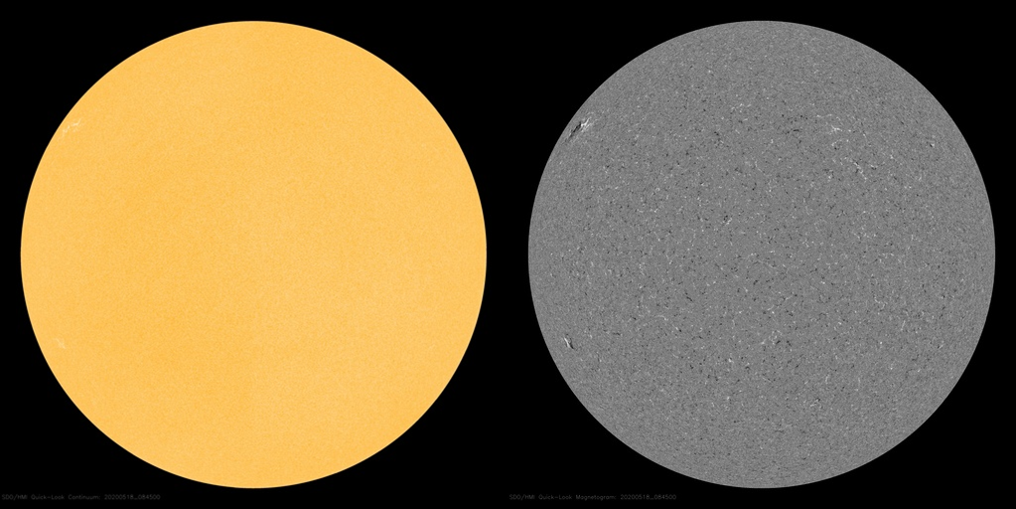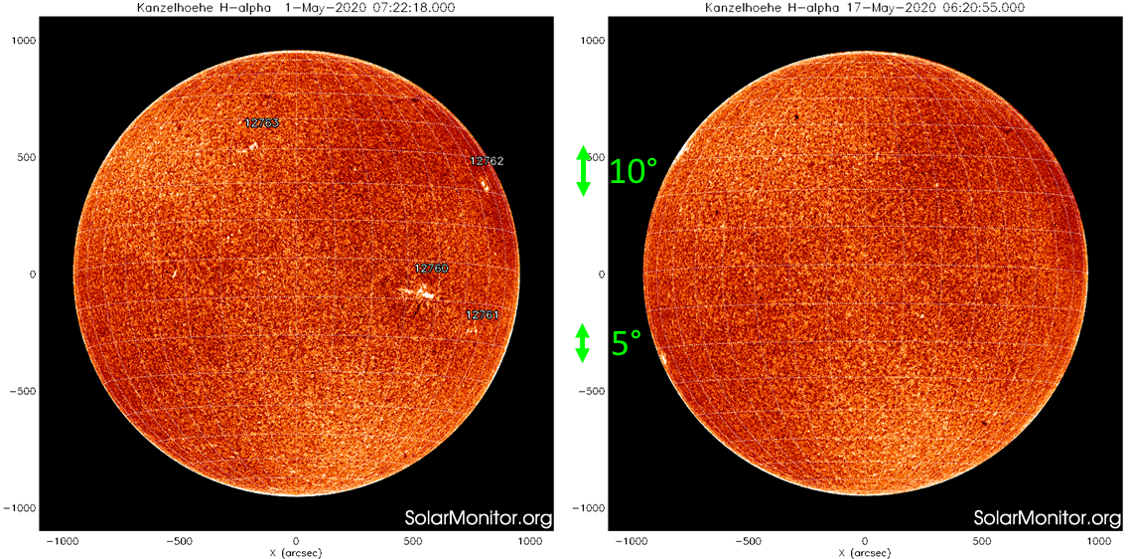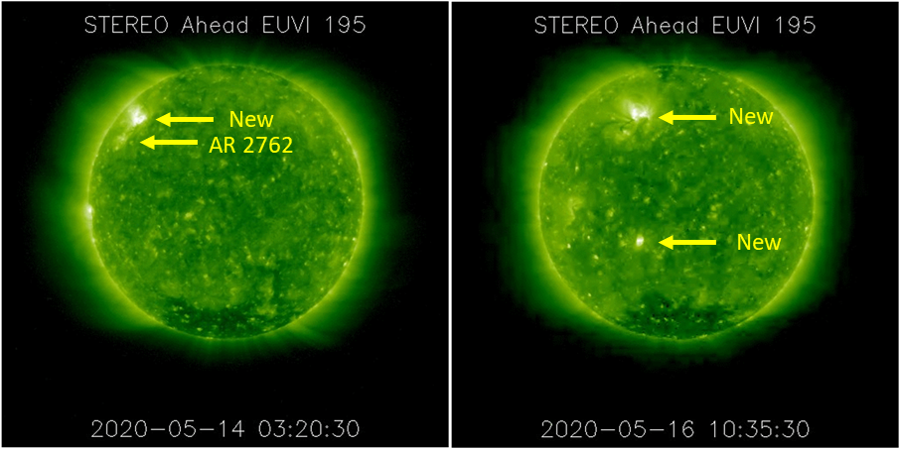Late on 16 May, two bright faculae regions rounded the solar east limb. These regions manifested themselves already more than a day before, as the bright emission in extreme ultraviolet (EUV) imagery gave away their presence (see SDO imagery underneath). Faculae fields are areas of enhanced magnetic fields on the Sun. They can be the craddle for the development of new sunspots, and exist days to weeks after the sunspots have disappeared. There's a saying among solar observers that every sunspot has its faculae field, but not every faculae field has a sunspot.

As the active regions rounded the east limb and became better visible, it became clear that these faculae fields were spotless. They did not get a NOAA or Catania number. It's too bad, because their magnetic configuration as well as their high latitude (resp. near +32 degrees and -23 degrees) clearly indicated these regions belonged to the new solar cycle. See this STCE news item on how to distinguish sunspots from the new and the old solar cycle. The lack of sunspots also resulted in insignificant flaring, and the solar activity remained at very low levels. Nonetheless, solar observers commented on the brightness of the faculae fields and in particular the one near the northeast limb. They considered it the brightest they had seen in a long while - which is no surprize in view of the long and deep minimum leaving the Sun featureless for weeks on end.

It was tempting to conclude that these regions were the re-appearance of the former sunspot groups NOAA 2762 and 2761, which rounded the west limb just about two weeks earlier. However, they are not and the two faculae fields that became visible are genuinely new active regions. There are two reasons for this. First of all, the two regions are clearly situated more poleward than the former sunspot regions: about 10 degrees for the northeast region, and about 5 degrees for the southeast regions. See the annotated image underneath.

The second reason can be seen in EUV imagery by the STEREO-A satellite, which is now about 73 degrees trailing the Earth. These images clearly show the new (northeast) region about 10 degrees north of the decaying (weakening) region NOAA 2762. NOAA 2761 had already fully disappeared by the time it rotated into view of STEREO's EUV imager, and a new region can clearly be seen developing just days before rounding the east limb as seen from Earth.







